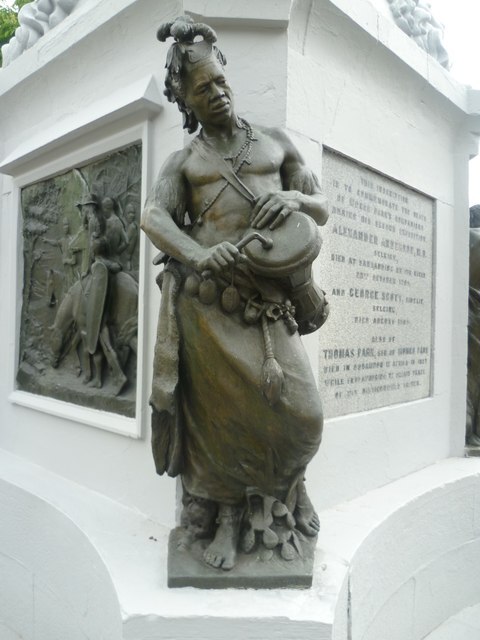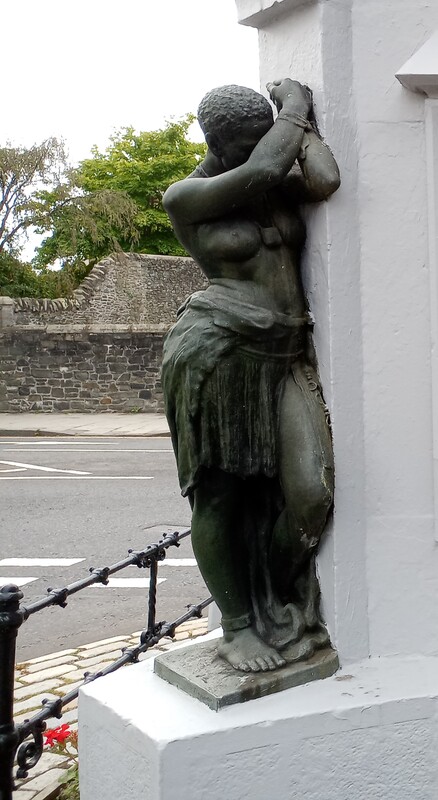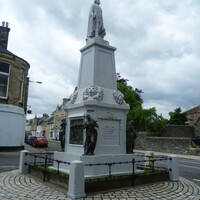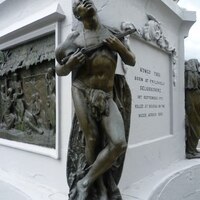How to cite this page Comment citer cette page
Statue of Mungo Park
Monument
- has description | a une description
-
The statue of Mungo Park is accompanied by four bronze statues on each corner of the plinth, as well as two bronze reliefs on either side. The original statue of Park was created by Andrew Currie in 1859, while the bronze figures and reliefs were added by Thomas John Clapperton in 1913.
According to the commission, the four figures were designed to symbolise 'the four tribes with whom Park came in contact in his travels in South Africa'. They supposedly represent "Peace", "War", "Slavery", and "Home Life in the Niger". -
The figure on the front left corner depicts a African man with a gourd.
The figure on the front right corner depicts an African woman with a child.
The figure on the back left corner depicts an enslaved African woman whose hands are bound together. The woman is partially nude, and there appears to be shackle on her left ankle.
The figure on the back right corner depicts an African man with a drum. -
The two reliefs depict historical events from Park's life.
The relief on the left side depicts Park being aided by an African woman. They are surrounded by six other African men, women and children.
The relief on the right side depicts Park on a horse in Africa. Park is accompanied by four Africans, who are helping to guide the way for him. - managed by | dirigé par
-
 Scottish Borders Council
Scottish Borders Council
- depicts | figure
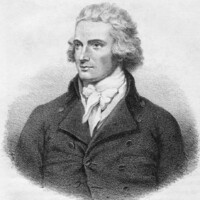 Park, Mungo
Park, Mungo- shows visual item | présente l'item visuel
- man
- consists of | consiste en
- stone
Statue | La statue
- shows visual item | présente l'item visuel
- allegory of Africa
- colonial subject
- enslaved person
- nudity
- man
- woman
- child
- has inscription | a une inscription
- On the front:
MUNGO PARK
BORN AT FOULSHIELS
SELKIRKSHIRE
10TH SEPTEMBER 1771
KILLED AT BOUSSA ON THE NIGER, AFRICA 1805 - On the reverse:
THIS INSCRIPTION IS TO COMMEMORATE THE DEATH OF MUNGO PARK'S COMPANIONS DURING HIS SECOND EXPEDITION
ALEXANDER ANDERSON, M.D. SELKIRK DIED AT SANSANDING ON THE NIGER 28TH OCTOBER 1805.
AND GEORGE SCOTT, SINGLIE, SELKIRK DIED AUGUST 1805.
ALSO OF THOMAS PARK, SON OF MUNGO PARK DIED IN AQUAMBRO W AFRICA IN 1827 WHILE ENDEAVOURING TO OBTAIN TRACE OF HIS DISTINGUISHED FATHER
Plinth | Le socle
- is referred to by | est référencé par
- Historic Environment Scotland
- Canmore
- Mungo Park - Exploring his Memorial

